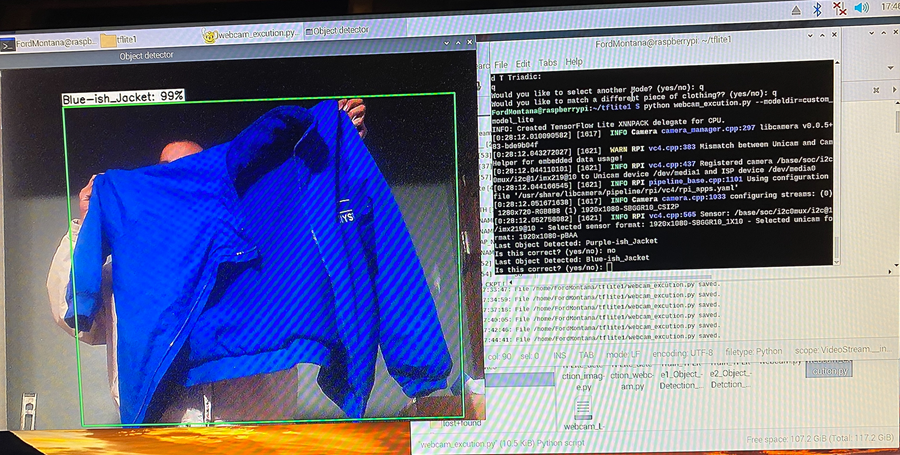As I reflect on my senior engineering design project, which centered on creating an innovative clothing matching and coordination solution, I am imbued with a sense of achievement and enriched learning. The goal of my project was to design an AI-powered Color Matching Wardrobe, addressing the common frustration of not knowing what to wear in the morning.
The culmination of my four years of undergraduate education enabled me to apply the technical knowledge I had acquired. This project, which integrated my understanding of electrical engineering and computer science, was rewarding as I saw the skills and knowledge I had gained materialize in a functioning prototype. In terms of electrical engineering, ensuring that the circuit operated without mishaps was crucial. Potential risks included short circuits or component damage, although these were unlikely due to the low voltage used. To prevent such issues, it was imperative to select the correct components, requiring calculations with specific formulas, and to adhere to strict engineering safety measures. On the computer science front, the ability to create and modify code to function precisely as desired was key. Employing machine learning was essential to my project since it formed the backbone of the design. The AI needed to accurately detect objects, which, in my case, were clothes and their colors. This was much easier said than done.
The most challenging aspect of this project was undoubtedly the software component, more so than the hardware. Throughout the project, I encountered numerous problems that halted my progress for days until I found a solution. Tasks I initially considered straightforward, like installing certain programs, turned out to be the most troublesome and time-consuming. Moreover, there were issues with the coding itself. Minor changes made to improve user-friendliness often caused the program to malfunction. For instance, increasing the resolution of the live feed resulted in label boxes misaligning with the objects.
This experience has taught me that, even as I near the end of my undergraduate education, there is still much for me to learn and improve upon. However, these struggles have been enlightening. I have learned various methods to solve these issues and the importance of broadening my thought process. Often, I was overly fixated on a single solution, overlooking simpler fixes that didn't initially occur to me. The project also taught me the value of patience; rushing through certain tasks, which needed slow and precise development, led to starting over from scratch after a rushed error, a completely demoralizing experience. Yet, this has made me more cautious and attentive to ensure proper execution, helping me avoid similar setbacks in the future.
I can confidently say that, despite its stressful nature, this project has been the most enjoyable and rewarding experience of my student life. I am grateful for all the support I received, especially from my mentor Professor Changmin Kim, whose pressure was instrumental in ensuring the project's timely completion.


No comments:
Post a Comment